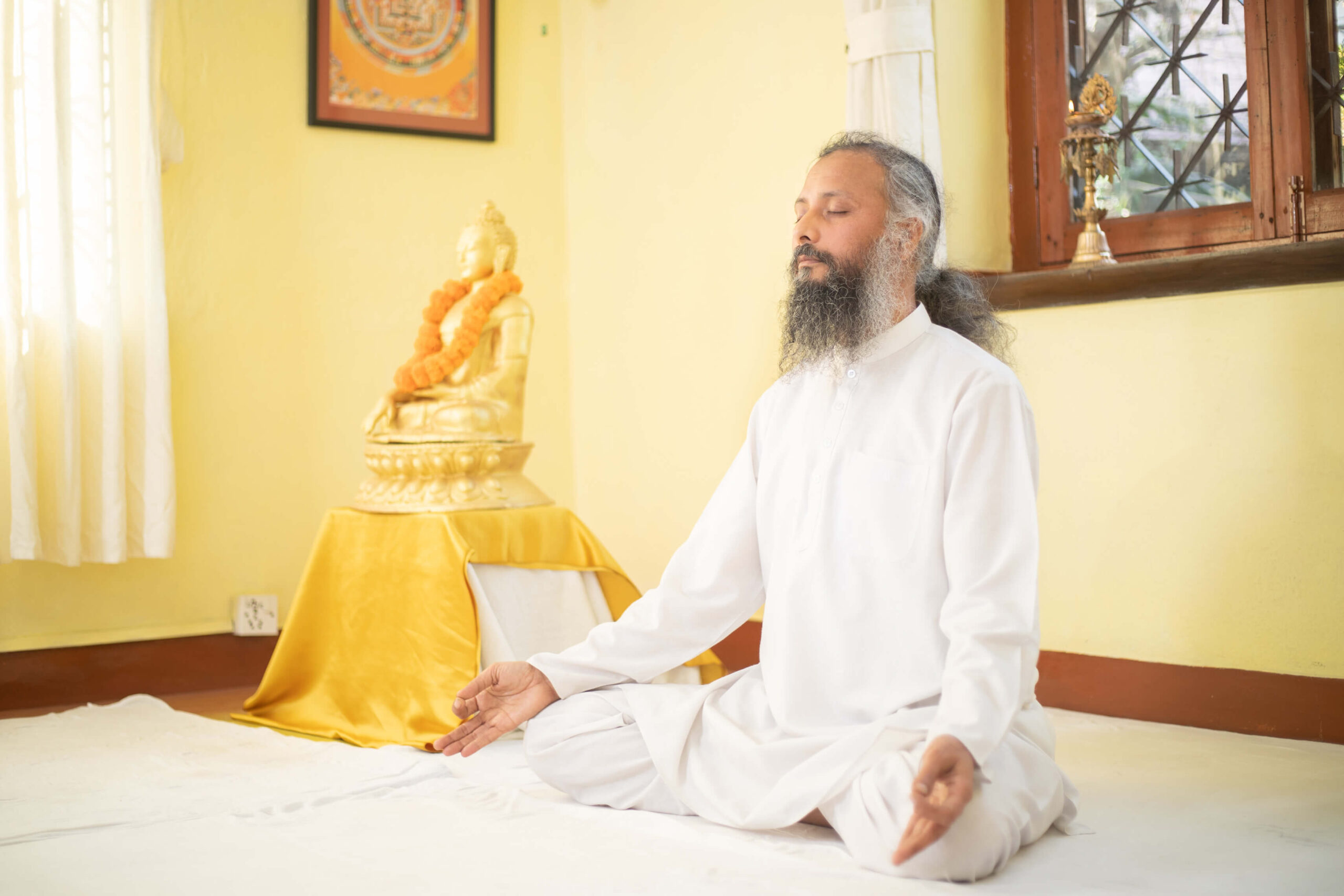समत्वं योग उच्यते
Which means Evenness of Mind is known as Yoga
Nepal is the land of Adi Yogi ‘Shiva’, Rishi (Sage) Patanjali who is the father of Astanga Yoga and many other enlightened sages born in different places of Nepal who brought Yoga as a tool not only for healthy living but also for spiritual awareness to attain Moksha by liberating oneself from all kinds of sufferings.
Essentially, Yoga is a spiritual discipline based on an extremely subtle science, which focuses on bringing balance between mind and body. It is an art and science of living in harmony.
The word ‘Yoga’ is derived from the Sanskrit root ‘Yuj’, meaning ‘to join’ or ‘to yoke’ or ‘to unite’ or harness together.
As per Yogic sacred scriptures the Yoga practice leads to the union of individual consciousness with that of the Universal Consciousness, indicating a perfect harmony between the Mind and Body, Human & Nature.
One who experiences this oneness of existence is termed as a yogi, having attained to a state of freedom referred to as moksha or nirvana. Thus, the aim of Yoga is Self-realization, to overcome all kinds of sufferings and leading to Moksha ‘the state of liberation’ or Kaivalya ‘freedom’.
Living with freedom in all walks of life, health and harmony shall be the main objectives of Yoga practice.
Yoga is much more than just Asanas and Pranayama. It is the complete understanding of body, prana, and mind and this is what at Moksha we practice and convey to our guests. You will acquire an insight of Yoga as an integral part of your life during your stay with us. In order to experience a Yogic Life bringing a state of fitness, flexibility and lightness in the body is the first where the mind and spirit are not distracted by the disturbances of the body. The Less the body distracts, the more the mind and spirit are freed to observe and discover beyond that enables us to be focused, calm, and attain peace.
- Yoga at Moksha is an integral part of the healing we deliver. Through asanas, healing through breath: pranayama and meditation, and Yogic philosophy, our Yoga Acharya complement the Ayurvedic interventions of the Vaidya.
At Moksha, you can interact with Yoga in the following two ways:
You will attend 2 group or individual sessions a day for Asanas, Pranayama and Meditation. If needed you can also have individual conversations with the Yoga teacher which will help you to understand the role of Yoga in your routine and to addressing specific unsolved queries as well as get an enhanced understanding of Yoga & Life.
We have some guests visiting only for Yoga to experience, learn and realize a correct perspective of Living in Joy. In this program you will make a ‘Journey to Blissful Health’ along with the way of Yogi while aiming on philosophy, asanas, techniques of pranayama, meditation and mantra chanting. The exposure is to hatha Yoga, Jnana Yoga, Bhakti Yoga, Karma Yoga and Raj Yoga. We encourage stillness in action what is called choiceless state of being. Here the pauses between actions are imparted at a time of observation to dig within and to understand the innate nature.
Path of Yoga at Moksha:
Karma Yoga: Yoga of Action – the path to spiritualize our day-to-day life with selflessness
Bhakti Yoga: Yoga of Love – the path of devotion to a divine personality and dualism.
Jnana Yoga: Yoga of Wisdom – the path of intellectual philosophy and non-dualism.
Raja Yoga: Yoga of Meditation – the path of mastering the mind and mystical experiences.
Hatha Yoga
Hatha yoga is a complete subject in itself with progressive levels which deals not only with the physical aspect of the body. It prescribes a specific yogic sequence. The Asanas are a channel of obtaining stability of position and aid to achieve success in contemplation, without any distraction of the mind. If the position is not calm, the slightest inconvenience will pull the mind away from the aim, thus no peace of mind will be possible till the Asana has ceased to cause pain.
We are the owners of five different layers of the body which are called Panchakosha.
The outer body is known as Annamaya Kosha, the body made up of matter. The inner body is known as Manomaya Kosha, the body of mind, the mental dimension. Then there is Pranamaya Kosha, the energy dimension; Vijnanamaya Kosha, the consciousness dimension and Anandamaya Kosha, the bliss dimension – Ananda or Bliss arising out of spiritual realization. When all the Koshas work at their optimum positive level that is perfection of Hatha Yoga. When your body is functioning optimally, there is good health and the senses are all fired up and active, there is a sense of physical vitality, lightness and dynamism. When the mind is happy, there is a feeling of contentment, positivity, optimism and everything is seen as light and bright. This optimum condition of body and mind is the perfection of hatha yoga. To experience the perfection of Yoga in an individual life, we heartily invite you at Moksha Ayurveda Nepal.
What are the actual benefits that Yoga can bring into your life?
After receiving Yoga retreat at Moksha, the daily practice at home itself can be rewarding in multiple ways. The following section is brought to put a light into the Yoga’s potential benefits for the seeker who want a balanced state of body, prana and mind in natural way.
Health Benefits of Yoga:
Here are some of Yoga benefits that can help maintain good health.
1. Mental Health
Only a disciplined and healthy mind can drive a life to the right direction and destination. Regular and routine practice of yoga in a correct way helps to gain clarity in mind. A clear mind can achieve a right perspective of living with quality which will result in peace of mind, a state of Nirvana.
2. Weight Management
Various studies have depicted that poor eating habits and a lousy lifestyle has the leading cause of deaths in the world, outdoing even those caused by smoking habits.
Yoga can be a blessing that helps progress your lifestyle by changing to a healthier routine. Also, as Yoga focuses on improving and maintaining your overall health, daily practice may also improve your metabolism, eventually helping you to keep weight in balance.
3. Increasing Flexibility and Mobility
One of the objectives of yoga is to achieve a deep meditation to transform oneself into a state of Samadhi. It can be aided by increasing flexibility in the physical body through enhancing the regulation of prana.
Yoga is a practice that can help make your body more flexible, and your muscles more resilient by proper stretching. And yoga asanas make you stretch your body parts and release the accumulated stresses.
If you are lacking a clue about how to begin and practice Yoga in the right way, Moksha has suitable yoga programs. If you are a complete beginner or looking for trainer level guidance for yourself or to guide others, we do have a program for you.
4. Improve Energy & Vitality
When practicing of Yoga becomes an integral part of our life then after a point of time it starts fruiting by improving our overall health. As the movement of physical body with the different technique of asanas and breathing awareness results in flexible and light body. The regular practice of Pranayama results in regulation of Prana all over the body so as it helps to calm the mind. When the body is light and mind is calm it helps to enhance energy and vitality.
5. A Natural Detox
We may experience the presence of toxins (Aama) inside our bodies as shown by a number of symptoms. Such as, indigestion, acne, constipation, rheumatoid arthritis, and so on are results of the accumulated toxins disturbing any of our systems.
The suitable combination of Yoga and Ayurveda definitely aids in releasing all those toxins.
There is a Yogic cleansing process which is called the Shat Kriya: Neti, Basti, Nauli, Dhauti, Kapalbhati and Tattraka.
In the nutshell, Yoga is an integral aspect of life that helps to lead not only for healthy and balanced living but also for knowing the innate nature of a being. Whether you are a seeker of truth or holistic wellbeing, Moksha Ayurveda Nepal is the name to trust.


